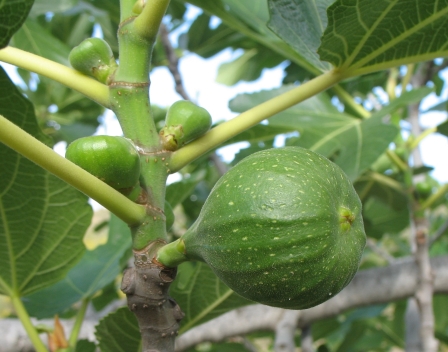Fig tree varieties
What are the different types of fig trees? How to trim a fig Bush? There are over 8varieties of fig trees in existence, all part of the mulberry (Moraceae) family. All of the varieties fall into four fig types: Caprifigs – Caprifigs only produce male flowers and never bear fruit.
Their only purpose is to pollinate female fig.

Smyrna – Smyrna figs bear all female flowers. They have to be pollinated by a caprifig. San Pedro – San Pedro figs bear two crops: one. The Ficus genus of plants includes more than 8woody species found mostly in tropical zones, with a few extending into warmer temperate regions.
The figs include many broadleaf evergreen and deciduous trees , as well as shrubs and lianas. The Adriatic fig tree is native to the Mediterranean region. The figs on it are light green skinned and have pink flesh when they are fresh.
Because their sugar content is really high, the figs grown on this tree are usually dried so they can be used in fig bars or fig pastes.
White Marseilles Fig Tree The white Marseilles fig tree will grow into a small shrub-like tree that when fully grown will only be between – feet tall. This is a very productive variety of fig tree and it should produce lots of figs. Produces large brown pear-shaped fruits with red flesh and rich, very sweet flavour.
Give yourself a striking garden feature with amazing fruit with a fig tree. Grown in a large container in a sunny, sheltered position, these fig trees produce bountiful crops of succulent fruit. The containers restrict root growth and promote fruit production.
Varieties ‘Rouge de Bordeaux’:One of the finest for flavour. Brown Turkey’:The classic fig for British gardens, heavy cropping, producing a mass of tasty fruit. Outdoors or in containers. Fig fruit is in the mulberry family. There are some 8types of figs, genus Ficus, but the most popular fig varieties that we grow for the delicious fruits are all varieties of Ficus carica, the common fig tree.
Most of them are adapted to a wide range of climates and soil types. A mature tree can encounter much colder atmospheres, but a small tree is sensitive to freeze. Therefore, it needs special care until all the hazards of cold past.
A member of the common category of figs, the celeste is a cold-hardy fig tree that often is found in the. Grown inland or along coastal areas of California, Chile and Italy, the Kadota fig tree is low maintenance and.
Considered a high-quality fig tree ,. The best selection of Fig trees you will find on the web. The cold-hardy varieties can withstand winters in Zones and but they will require some protection. Most fig trees will thrive unprotected in USDA Hardiness Zones 8-10. Tips for Growing Figs in Cold Weather.
After you choose the cold-hardy variety you would like to plant, the next important factor is site selection. Here are five varieties to consider. Black Jack’: With its purple-skinne sweet pink-fleshed fruits, this variety is similar to mission figs and thrives in California climates. Restrict the root run when planting figs. Needs a warm, sheltered site or conservatory.
This will help to control the size and improve fruiting, as the fig will put more energy into fruiting instead of growth. Prepare as follows: Dig a 60cm (2ft) square planting pit in the ground. For wall planting aim for the tree to be about 45cm (18ins) from the wall so the tree gets the full benefit of.
Comments
Post a Comment